Amphisarca Lists
-
Square Bud grafting technique of Walnut
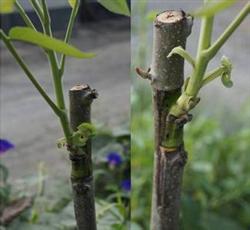
The square bud grafting technique of walnut has the advantages of high survival rate, labor-saving and convenient operation, and the technology is easy to master and popularize, which is suitable for planting young trees and nursery seedlings. The square budding technology is introduced as follows: 1. Grafting time. It can be carried out from late May to mid-July, but the best time is in June.
2018-09-14 -
Benefits of scattered planting of walnut trees
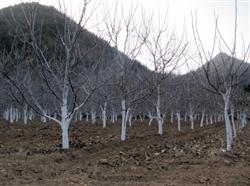
Cold prevention measures can be taken after walnut trees have fallen leaves (usually from mid-November to early December). First, burying the soil to prevent cold is the most effective and reliable measure to prevent and cure strips by bending the whole tree body to one side and covering the soil for the 1-2-year-old young trees that can not survive the winter safely in the open field. Second, cultivate soil to guard against cold.
2018-09-14 -
Grafting and pruning of Walnut trees
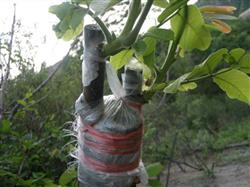
Pruning method of trees in full fruit pruning of walnut trees refers to pruning in a broad sense, that is, both pruning and pruning. Trees of different ages have different pruning tasks. The pruning of young trees is to continue to cultivate and maintain the shape of high-yielding trees on the basis of shaping, while the pruning of primary fruit trees is to continue to cultivate backbone branches at all levels and make full use of auxiliary branches.
2018-09-14 -
What if the walnut tree doesn't hang its fruit?
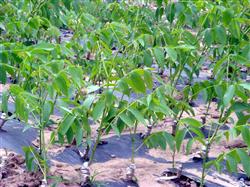
Grafting type grafting seedlings are grafted on rootstock seedlings (seedlings) to graft new walnut seedlings. There are mainly two types: tongue grafting and bud grafting. 1. Tongue grafting is divided into two types: skin-inserted tongue grafting and double-tongue grafting. 2, bud grafting is divided into seed bud walnut seedling grafting and square bud grafting. Square bud grafting is the most commonly used walnut seedling marriage at present.
2018-09-14 -
Scientific planting techniques of walnut seedlings and walnut trees
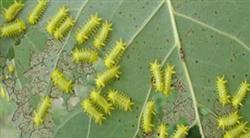
The yellow diamondback moth has one generation a year in the north and two generations in the Yangtze River valley. The mature larvae after autumn often spin silk and form hard cocoons on branches, petioles and even leaves to survive the winter. The cocoon is oval, grayish white, with several brown longitudinal bands, shaped like sparrow eggs. In early summer of the following year, mature larvae pupate in the cocoon, and the Eclosion adult flies out 1 month later.
2018-09-14 -
Measures for control of black spot of walnut
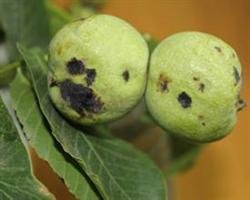
The pathogen of walnut black spot generally overwinters in shoots or buds, and the bacterial liquid secreted by Yanchun mainly harms young fruits, leaves and twigs by wind and rain. Management methods: 1. Overwintering management. After deciduous leaves, tree trunks and branches are smeared to protect the general from spreading germs on the tree, heat preservation, disinfection and frost prevention. Spray tree protection at the same time.
2018-09-14 -
How to control Carya cathayensis flower bud maggot
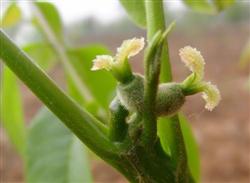
Carya cathayensis flower bud maggot is the main pest that harms the flower bud of Carya cathayensis. Because the insect is small and concealed, the occurrence period is short, and the harm is serious, once the effective control period is lost, the yield of Carya cathayensis will be seriously affected. In order to effectively guarantee the output of pecans this year, scientific and technological personnel put forward on how to carry out effective prevention and control: first, we should pay attention to.
2018-09-14 -
Control of Carya cathayensis Flower Bud maggot
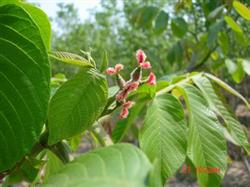
Carya cathayensis flower bud maggot is the main pest that harms the flower bud of Carya cathayensis. Because the insect is small and concealed, the occurrence period is short, and the harm is serious, once the effective control period is lost, the yield of Carya cathayensis will be seriously affected. In order to effectively guarantee the output of pecans this year, scientific and technological personnel put forward on how to carry out effective prevention and control: first, we should pay attention to.
2018-09-14 -
How to control Sclerotinia root rot of walnut seedlings?
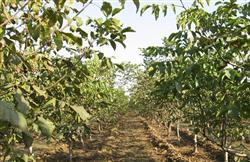
Sclerotial root rot, also known as white silk disease, harms seedlings for one more year, making its main root and lateral root cortex rot, aboveground withered, or even all dead. 1. Symptoms of the disease: at high temperature and high humidity, white silky mycelia were produced on the base of seedling root neck and the surrounding soil and deciduous surface, followed by small sclerotia.
2018-09-14 -
Main technical measures for cultivating thick and strong seedlings of Carya cathayensis
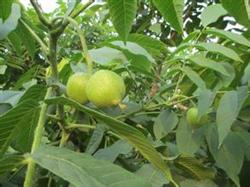
In recent years, many farmers are optimistic about the planting of flax walnut trees, but they know little about their planting techniques. Not long ago, some fruit farmers asked about the irrigation of flax walnut trees. The author believes that if you want to plant a good flax walnut tree, there can be no shortage of water for five times. Water for the first time. In a year with normal rainfall, the first water is in late March, said.
2018-09-14 -
Spring Management of Juglans regia

First, the planting of flax walnut trees. The suitable time for planting is from March to mid-April, after the soil is thawed and before the branches and buds germinate. Planting early is easy to survive and takes deep roots. Site selection should be considered according to the specific environmental requirements of walnut growth and development. The garden site had better choose sunny flat land and gentle slope land, and the soil is sandy loam.
2018-09-14 -
Integrated Control of Walnut Branch Blight
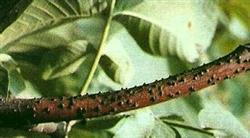
Walnut branch blight is caused by fungal infection and mainly harms the branches. It occurs everywhere, the general disease plant rate is 20-30%, and the serious disease plant rate is more than 80%, causing a large number of branches to die, directly affecting the tree growth and the yield and quality of walnut. Therefore, it is necessary to timely prevent and control the disease and promote the tree.
2018-09-14 -
Less topdressing of walnut in rainy season
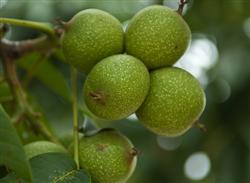
Select high-quality seedlings for planting, high-quality seedlings refer to the robust grafted seedlings with pure varieties, good interface healing, no damage, no diseases and insect pests, select the land where the soil thickness is more than 1 meter, the pH ph is 7.5-8.0, the soil salt content is less than 0.25%, and the groundwater level is less than 2 meters.
2018-09-14 -
Control of bacterial black spot of walnut
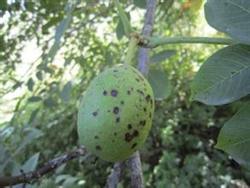
Walnut bacterial black spot mainly harms walnut fruit, the diseased fruit rate is 10% Mur40%, resulting in fruit blackening, decay, early fall, walnut kernel dryness. In addition, it also harms leaves, tender shoots, and the damage rate of some plots is up to 20%, 40%. Symptoms: the damaged young green fruit has brown oil-soaked spots on the peel at the initial stage.
2018-09-14 -
Red heart honey pomelo and plant ash
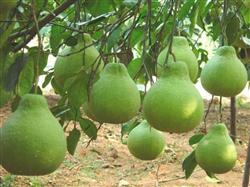
Summer is the period of hairy root, long summer shoot, young fruit and fruit expansion of red flesh honey pomelo, which is not only an important period of fertilization for the whole year, but also the key occurrence period of diseases and insect pests. We must timely grasp the technical measures of summer management, promote strong shoots and fruits, and seize a bumper harvest. This paper puts forward the following suggestions on summer management for reference. 1 and.
2018-09-14 -
Control of Red Meat Honey Pomelo Red Spider
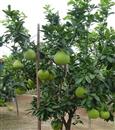
Spring is the early stage of red flesh honey pomelo hair root, evergreen shoot, long flower ear, blossom and young fruit. in this period, such as disease and insect damage, lack of fertilizer and drought have a direct impact on the strong shoot, strong flower and fruit setting rate of pomelo, and it is the key period to increase the yield of the same year. All kinds of spring tube technical measures must be taken timely in order to promote the strong tip.
2018-09-14 -
How to manage Young Hickory trees
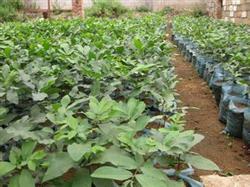
1, timely and appropriate amount of topdressing: topdressing 3-4 times a year. In the first half of the year, topdressing was applied once in late March, mid-May and early July, each time with 0.5 kg compound fertilizer, and the ring ditch was applied to the periphery of the crown. The base fertilizer was applied once from November to December in the second half of the year, with 10 kg of rotten chicken manure or 2 kg of vegetable cake and 30 cm under the soil. Shi.
2018-09-14 -
Causes and treatment of fruit drop of golden pomelo in cloudy and rainy days
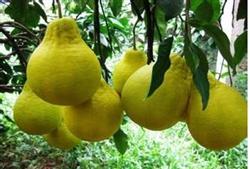
The reason for fruit drop is mainly due to the lack of flower thinning and insufficient application of Xiehua fertilizer in the early stage, and at present, pomelo is still in the physiological fruit drop stage, proper spraying of foliar fertilizer can alleviate fruit drop. However, fruit drop is only one aspect, a series of diseases caused by overcast and rainy weather is also a problem that can not be ignored, at this stage, anthracnose of pomelo, brown rot.
2018-09-14 -
How to fertilize the pomelo trees that have borne fruit in spring?
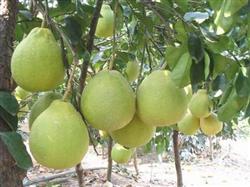
1. Fertilization of 1-3-year-old young trees should be combined with the characteristics of multiple shoots of pomelo trees in order to accelerate the growth and high yield of young trees. Fertilization before shoots can promote the growth of shoots and make the shoots grow healthily. Topdressing is mainly quick-acting fertilizer. The method of fertilization: apply frequently and less, and apply more spring shoot fertilizer. The fertilization time is February, May and July, respectively. ...
2018-09-14 -
Characteristics and cultivation techniques of sweet pomelo
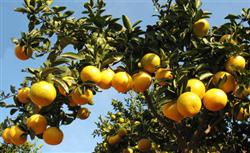
Sweet pomelo is a new variety of tangerine introduced from Japan in 1998, and it has been successfully planted in our city. Sweet pomelo has five advantages, such as convenient management, excellent flavor, high yield, resistance to storage and transportation, and strong cold resistance. Among the late-ripening citrus varieties, it is the only one that can be eaten immediately and is deeply loved by fruit growers and consumers. Sweet pomelo at 20.
2018-09-14
